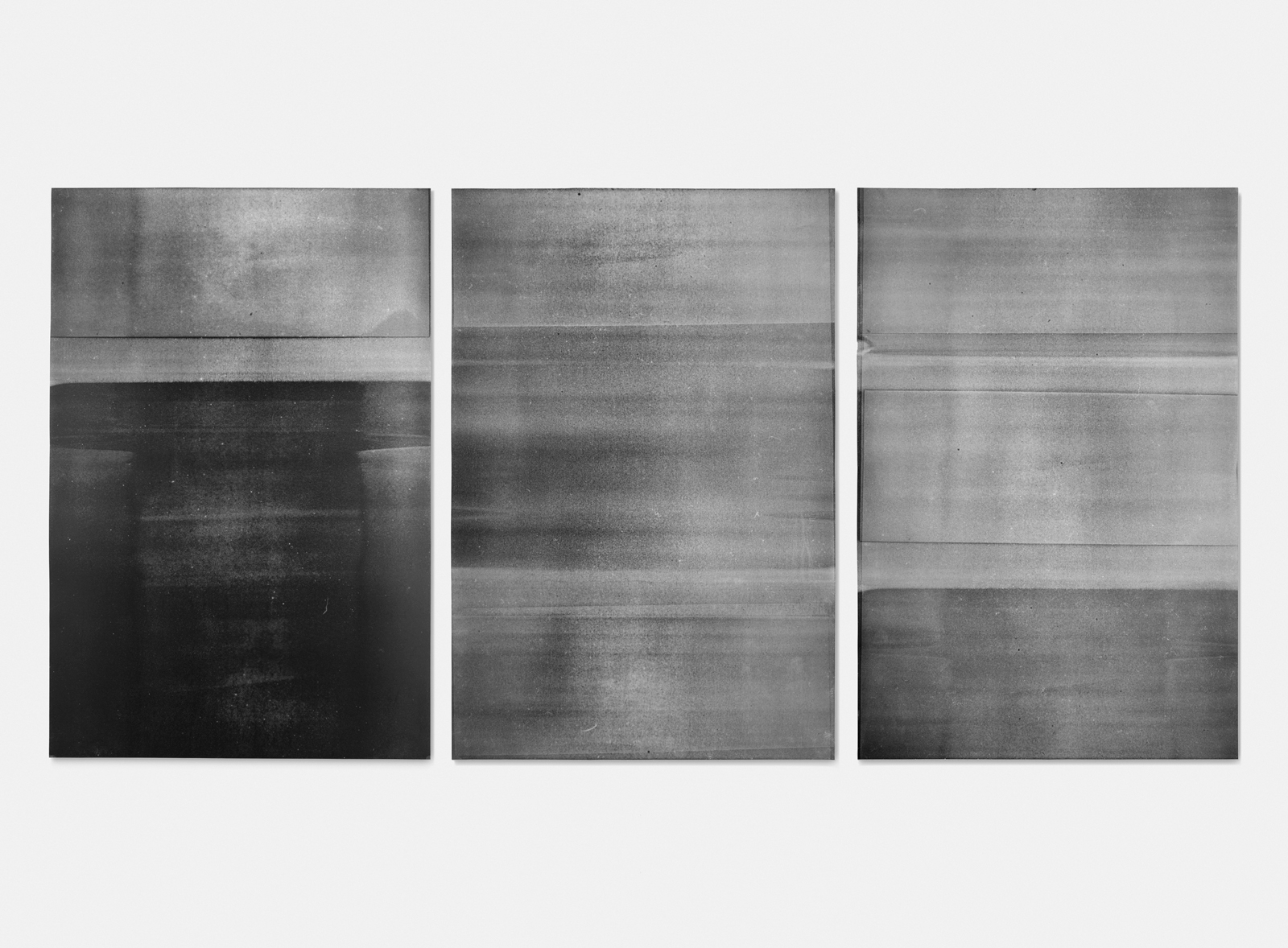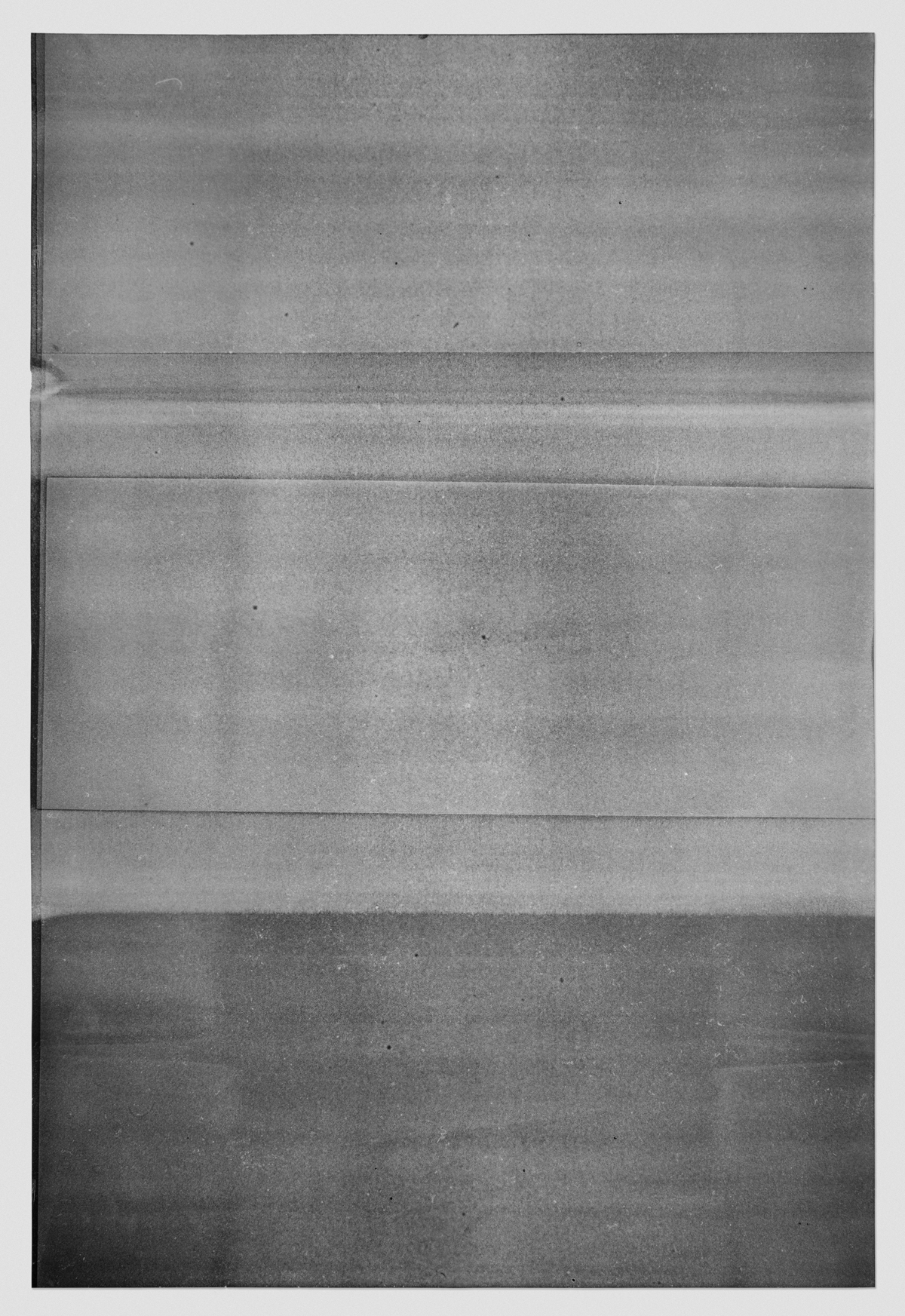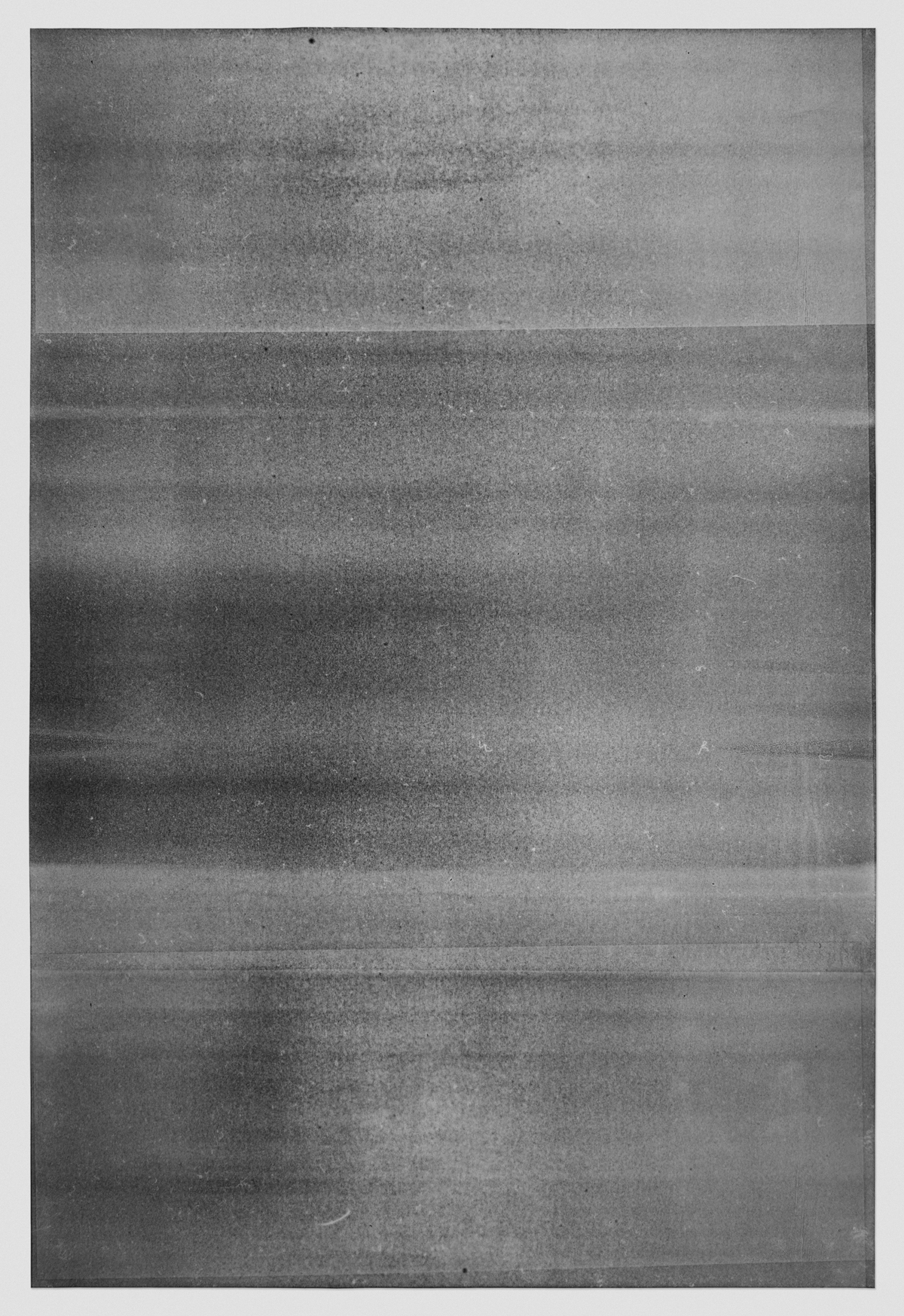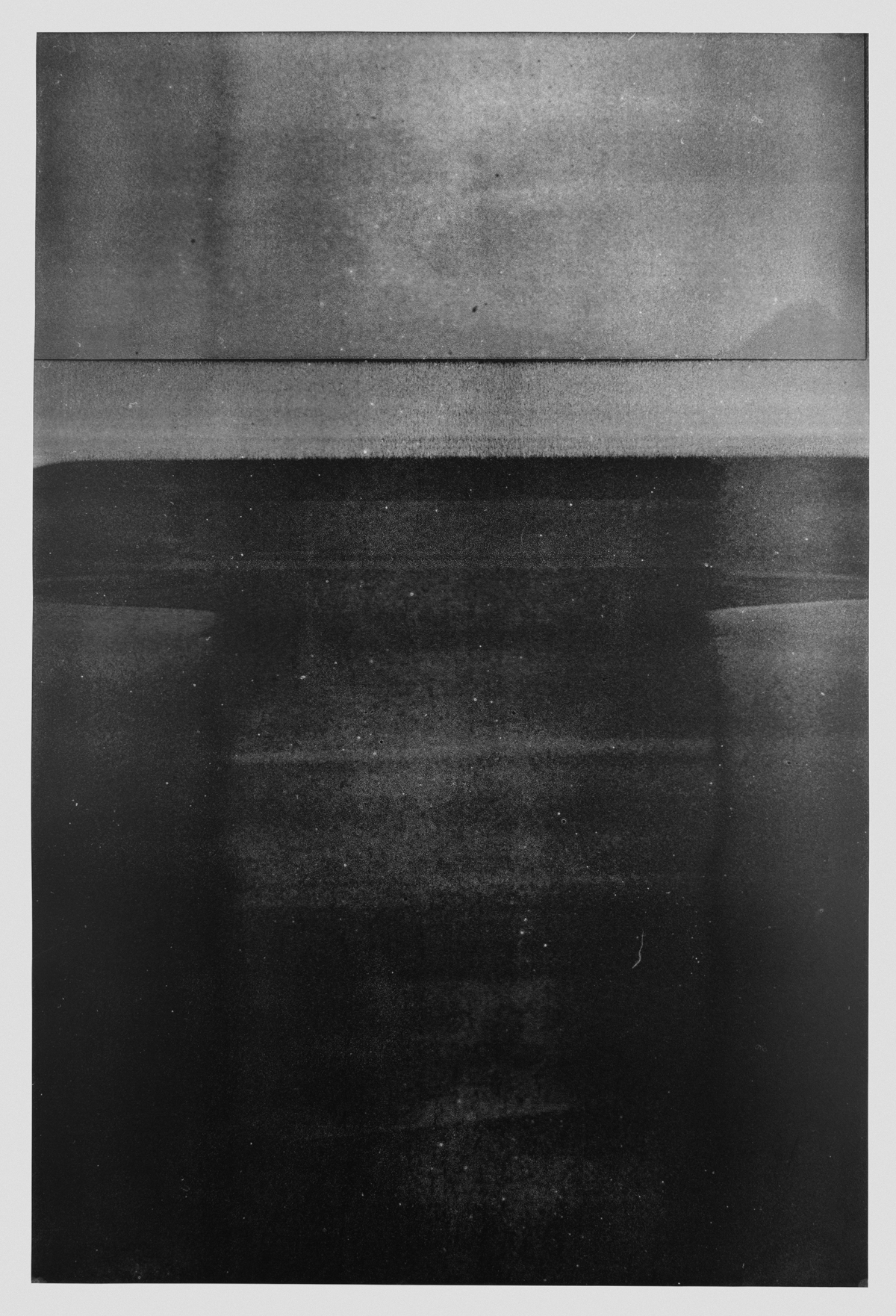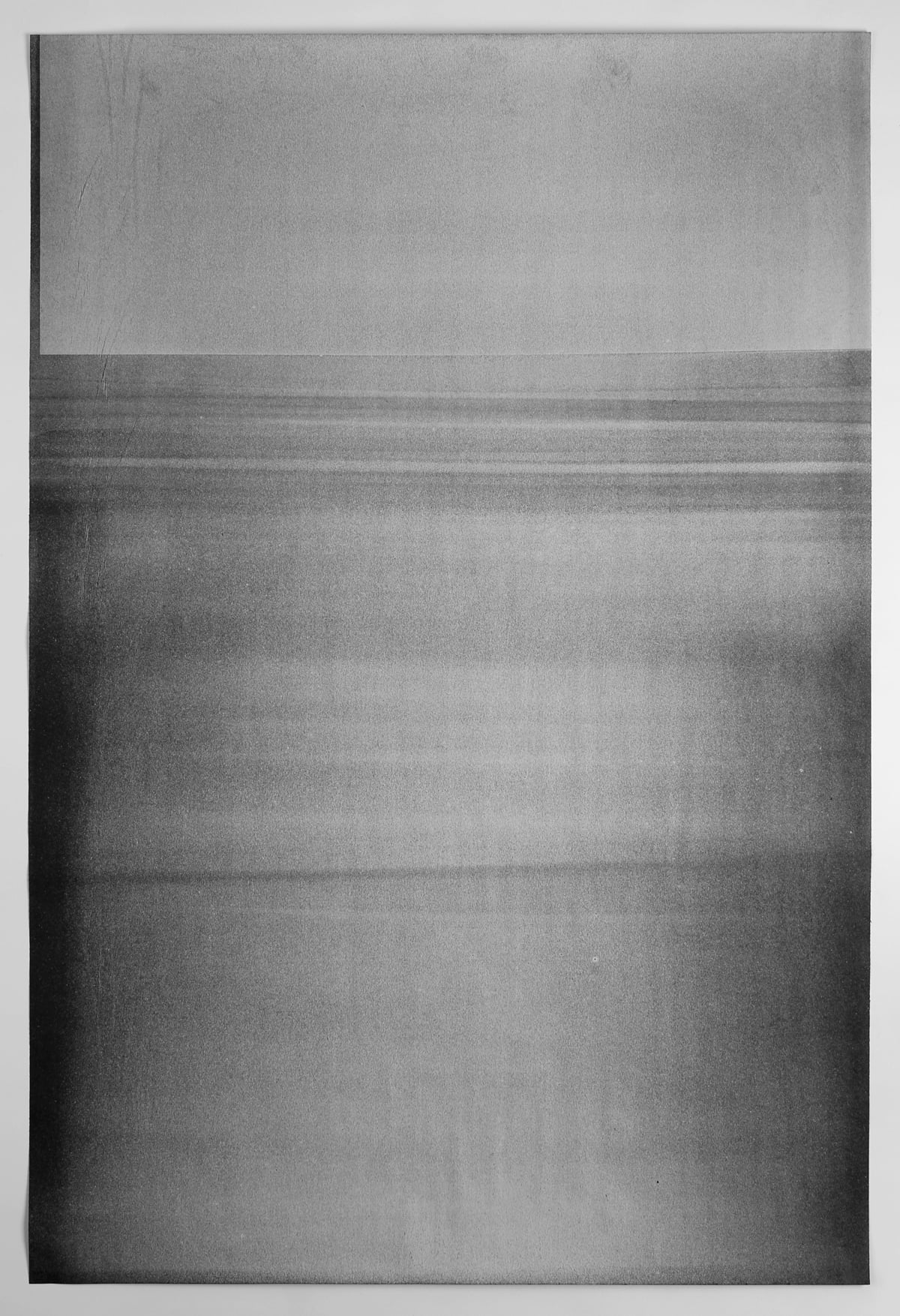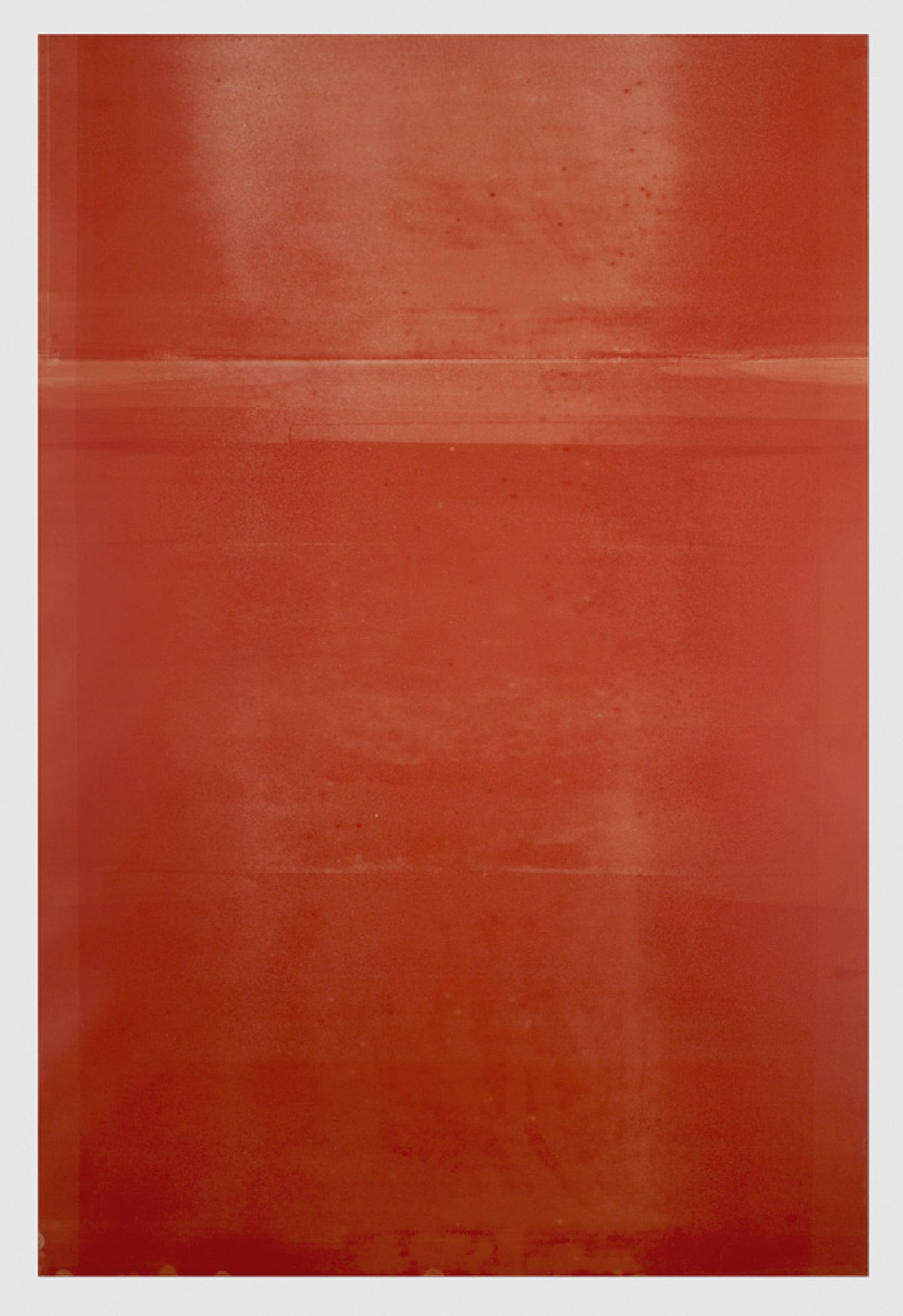Materially speaking, the works can be read as close relatives to printmaking. Each piece is composed of what would traditionally be known as the 'off-roll': the act of ridding the roller of excess ink before its application to a matrix (the plate, block, or stone on which the image that makes up a traditional print is prepared). By removing the matrix from the equation Verburg has chosen to use the roller as a direct tool for transferring ink onto to its intended surface. With surprising versatility the roller produces marks that range from fully saturated fields of pigment to ordered geometric rows, irregular gradients and overlapping translucencies.
The density and viscosity in these 'off-roll paintings' depend on a wide range of factors. These include the size of the roller, the amount of pressure applied, the speed of each pass, the number of overlaps and the number of passes. By layering pigment in this way, Verburg is able to build a depth and dimension to each piece that closely mimics some of the more fleeting effects of light. Viewers are offered the chance to be present at the exact moment when light becomes form. With a self-declared long history of 'obsession' with light, Verburg has achieved a unique method of capturing its most elusive characteristics. In a sense, he has rendered light physical, transforming it into a material for art-making. The effects of this transformation appear in a variety of ways: sometimes as grainy swaths of semi-translucent grey forms floating in space, and at other times as flickering patches of reflected sunlight captured within the confines of a smooth white surface. Always monochromatic and composed of simple geometries, and yet, endlessly nuanced in the complexity of their detail, these works possess a deceptively minimalist appeal.
Throughout the process of the building up and transferring of ink there are a great number of elements that can affect the work's final impression. Each piece in this series is the result of a careful negotiation between control and chance. Every decision made takes into account the specific characteristics of the roller, the density and texture of the support and the numerous markings on the studio work surfaces themselves. The surprise is in the making; from never quite knowing what will come through and what will be absorbed or left behind. Any visual noise that may occur (like the tiny white spots that appear when dust has prevented the ink's transfer), is carefully monitored in order to control the proportions of solid and uneven forms. For Verburg then, abstraction involves the practice of a strategic method for calculating variables that are always already out of his control.
excerpt from When Light Becomes Form, Alex Bowron for the exihibtion/residency at Open Studio Toronto, 2015
